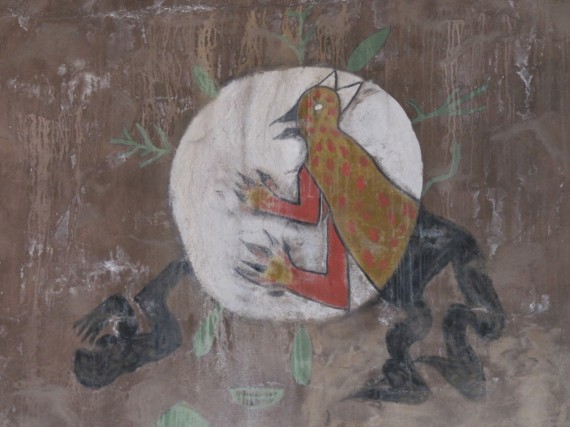Family members who have seen this video have requested that I post it. A kind of Grand Canyon addendum to our recent trip. I about fall over laughing every time I watch Jill’s little stumble.
.

Mostly about Utah
Family members who have seen this video have requested that I post it. A kind of Grand Canyon addendum to our recent trip. I about fall over laughing every time I watch Jill’s little stumble.
.


The Watchtower has an internal steel framework designed by the bridge builders of the Santa Fe Railway
“First and most important, was to design a building that would become part of its surroundings; one that would create no discordant note against the time eroded walls of this promontory.”
The 70-foot Watchtower, a National Historic Landmark, is located at Desert View, the eastern-most developed area on the South Rim of Grand Canyon National Park. The design takes its influences from the architecture of the ancestral Puebloan people. There is a gift store, with the upper floors utilized as observation decks for views of the canyon and the Painted Desert.

The top floor of the tower is without decoration which might detract from the beautiful panoramic views of the Grand Canyon



Click on the links to view the family pictures shot at the Watchtower.

The Colorado River flowed across the Colorado Plateau on its way from the Rocky Mountains to the Gulf of California. Each rain washed sparsely vegetated desert soils into the river.
A steep gradient and heavy sediment loads created a powerful tool for erosion. The river’s volume varied seasonally and over time. As the last ice age ended, the flow may have been 10 times today’s volume.
As the river cuts down, the canyon deepens. Tributaries erode into the canyon’s sides, increasing its width. Erosion carves faster into the softer rock layers, undermining harder layers above. With no foundation these layers collapse, forming the cliffs and slopes profile of the canyon. Erosion wears away the ridges separating adjacent side canyons, leaving buttes and pinnacles.
The most popular trail into the canyon begins west of the Bright Angel Lodge on the South Rim. The trailhead elevation is 6,785 feet and descends 4,380 feet to the Colorado River. The Bright Angel Trail offers wonderful views all along the trail. It has an average grade of 10% along its entire length. At trail’s end, the River Trail continues another 2 miles to the Bright Angel Campground and Phantom Ranch.
Hazards hikers can encounter along the Bright Angel Trail include dehydration, sudden rainstorms, flash flooding, loose footing, bootpacked ice, rockfall, encounters with wildlife, and extreme heat. At the Colorado River, additional hazards include hypothermia (due to the river’s consistently cold temperatures), trauma (due to collisions with boulders in rapids), and drowning.
We decided to walk for just a half-hour down the trail.
Click on the links to view the family pictures shot at the Grand Canyon.
